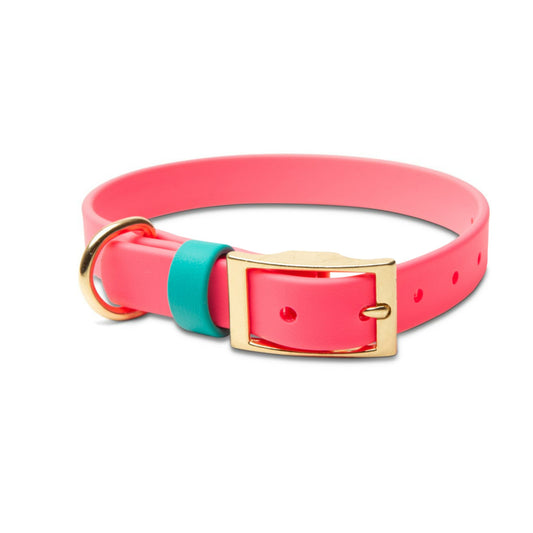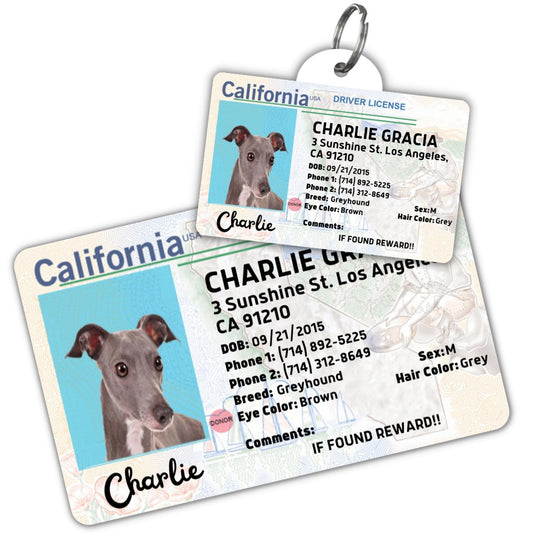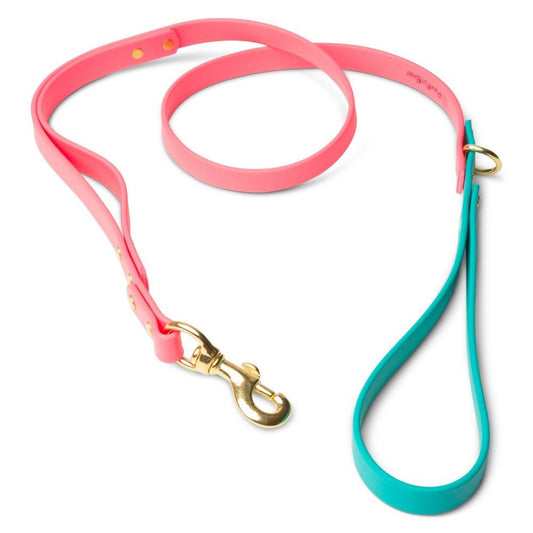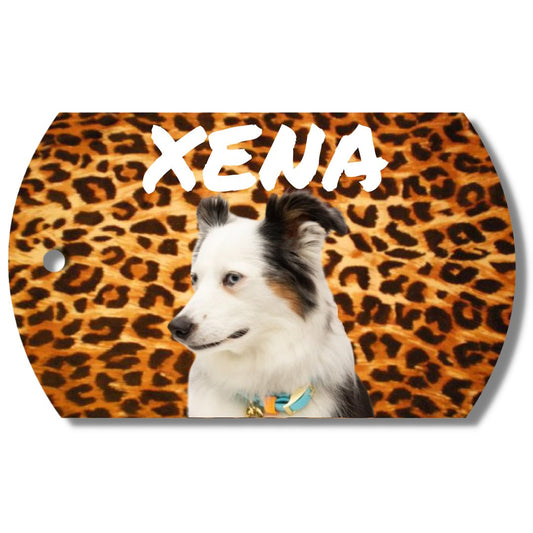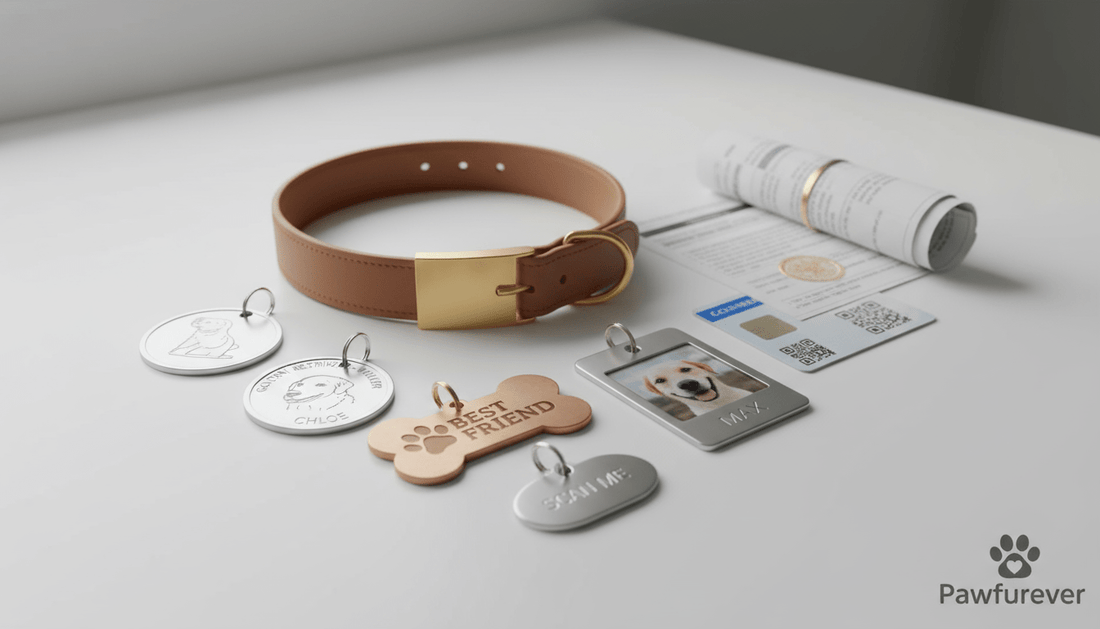
Complete Guide to Dog License Holders: Keep Your Pet's Documents Organized
Every responsible dog owner faces a common challenge: managing the growing collection of tags, licenses, and identification that accumulates on their pet's collar. Between municipal dog license tags, rabies vaccination tags, ID tags with contact information, and sometimes microchip registration tags, the jingling cluster hanging from your dog's collar can become overwhelming, both audibly and practically. Understanding proper dog license holder options transforms this chaos into organized, functional identification that keeps your pet safe without creating unnecessary noise or clutter.
The importance of properly displaying and organizing your dog's documentation extends beyond simple aesthetics. Many municipalities legally require visible dog license tags, and emergency identification could mean the difference between a quick reunion and days of desperate searching if your dog becomes lost. Learning to manage this documentation effectively ensures compliance with local laws while maintaining your dog's comfort and your peace of mind.
Understanding Legal Requirements for Dog License Tags
Before exploring organization solutions, it's crucial to understand why these tags matter and what you're legally required to display.
-
Municipal Licensing Laws
Most cities and counties require dogs over a certain age, typically four months, to be licensed annually. These license dog tag programs serve multiple purposes: they fund animal control services and off-leash dog parks, verify rabies vaccination status, and create databases that help reunite lost dogs with owners quickly.
Failing to license your dog can result in fines, and in the event of a bite incident, lack of proof of current rabies vaccination could have serious consequences, including quarantine or worse. The visible license tag serves as immediate proof of compliance with local regulations.
-
What Must Be Displayed
Requirements vary by jurisdiction, but most areas require dogs to wear their current license tag whenever in public spaces. Some localities also require rabies tags, while others include that information in the license itself. Contact your local animal control office or visit their website to understand specific requirements for your area.
The key principle: if authorities issue a tag, it generally must be worn where it's visible. This legal requirement makes the organization not just convenient but necessary.
Types of Dog License Holders for Collars
Various solutions exist for managing the tag collection on your dog's collar, each with distinct advantages and appropriate use cases.
-
Traditional Split Rings
The most common dog license holder for collar attachment is the simple split ring, essentially a miniature key ring. These are typically provided free with municipal licenses and work adequately for dogs with just one or two tags.
However, split rings create problems as tag collections grow. Multiple tags on a single ring produce constant jingling that disturbs both household peace and your dog's rest. Tags rub against each other, gradually wearing away engraved information. The ring itself can pull fur and pinch skin if it catches during play.
-
S-Hooks
S-hooks offer slightly easier tag attachment and removal than split rings. Simply hook one end through the tag, then hook the other end to your collar's D-ring. Pliers help pinch the ends closed for security.
While more convenient than split rings, S-hooks share the same noise and tag-wear issues. They're best suited for temporary solutions or collars that rotate frequently, where easy tag transfer matters more than long-term organization.
-
Tag Silencers
Tag silencers revolutionize collar organization by eliminating the jingling while keeping all tags accessible. These small devices, usually rubber or silicone, hold multiple tags in a compact stack on a single post that attaches to your collar.
The silencer design prevents tags from rubbing together, protecting engraved dog ID tags from premature wear. Your dog's sleep and your household's quiet both benefit from eliminating the constant metallic jingling. Most importantly, tag information remains easily visible, simply fan the tags out to read any specific detail.
Quality tag silencers accommodate 3-4 standard tags comfortably. They attach securely to collar D-rings and withstand active dog play without coming loose.
-
Slide-On Tag Holders
Some manufacturers produce slide-on tag holders that attach directly to flat collars rather than hanging from D-rings. These keep tags flush against the collar, reducing snagging risks during rough play or outdoor adventures.
The drawback? They work only with specific collar types and may not accommodate all tag sizes or shapes. However, for dogs who frequently catch their tags on obstacles, slide-on holders provide valuable snag prevention.
Organizing Multiple Tags Effectively
Many dogs accumulate four or more tags: municipal license, rabies certificate, personal ID, and microchip registration. Organizing this collection thoughtfully ensures quick access to critical information while minimizing hassles.
-
Priority Stacking
When using a tag silencer or stacked arrangement, place tags in priority order. Your personal ID tag with phone number should be most accessible, it enables immediate contact without requiring special equipment or databases.
Next, place dog license tags that prove compliance with local regulations. Rabies tags follow, as they confirm vaccination status. Microchip tags, which merely indicate the chip exists and require scanning equipment to access information, can be innermost since they're rarely needed for quick identification.
-
Rotating Seasonal Tags
Some owners maintain two collar setups: an everyday collar with minimal tags for home and controlled outings, and an adventure collar with complete tag collection for parks, travel, or less controlled environments. This approach lets your dog enjoy quiet, lightweight collar wear at home while ensuring full identification when risks increase.
Alternatively, some use tag silencers at home to minimize noise, removing them for quick neighborhood walks where risks are low, then reattaching for longer adventures.
-
Waterproof Considerations
For dogs who swim frequently or play in wet conditions, waterproof dog tag options become important. Traditional metal tags handle moisture well, but the license dog tag holder for collar and attachment hardware can suffer from rust or corrosion with repeated water exposure.
Look for stainless steel or rust-resistant hardware for all attachment points. Ensure tag silencers are made from waterproof materials that won't degrade from repeated soaking and drying cycles.
Maintaining Tag Readability
Proper organization preserves tag readability, but maintenance practices also matter for keeping identification functional.
-
Preventing Tag Wear
Tags that contact each other during wear gradually grind away engraved information. This is especially problematic for soft metals or shallow engraving. Using tag silencers or holders that separate tags dramatically extends their readable lifespan.
Quality engraved dog ID tags with deep engraving resist wear far better than printed or surface-etched alternatives. When purchasing personal ID tags, invest in deeply engraved options that maintain readability for years.
-
Regular Inspection
Monthly, remove your dog's collar and inspect all tags for readability. Can you clearly read every number on the phone number? Is the license number legible? If any information has become difficult to read, replace that tag promptly.
Also check attachment hardware. Are split rings or S-hooks developing sharp edges from wear? Is the tag silencer showing cracks or material degradation? Replace worn hardware before it fails, potentially causing tag loss.
-
Cleaning for Clarity
Dirt, skin oils, and grime accumulate on tags, obscuring engraved information. Clean tags monthly using warm water, mild soap, and a soft brush, an old toothbrush works perfectly for getting into engraved grooves.
For stubborn tarnish on metal tags, specialized metal cleaners restore shine and improve visibility. Ensure tags are completely dry before reassembling on the collar to prevent rust on steel rings or hardware.
Choosing the Right License Holder

Selecting appropriate organization solutions depends on your dog's lifestyle, personality, and tag collection size.
-
Active Outdoor Dogs
Dogs who hike, swim, or engage in rough play need secure holders that won't snag on branches or come loose during vigorous activity. Tag silencers work well, but ensure they attach securely with industrial-strength construction.
For extreme outdoor enthusiasts, consider backup systems, perhaps a backup waterproof dog tag attached directly through the collar rather than hanging from the D-ring, reducing loss risk if primary tags fail.
-
Noise-Sensitive Situations
If household quiet matters, whether for sleeping babies, noise-sensitive roommates, or simply your own sanity, tag silencers become essential rather than optional. The difference between constant jingling and silent collar wear dramatically improves quality of life for everyone.
Some working dogs who need to remain quiet during activities especially benefit from tag silencers. Service dogs, therapy dogs, or any canine performing tasks requiring discretion move more quietly with organized, silenced tags.
-
Multi-Dog Households
Managing tags for multiple dogs requires systematic organization. Color-coded collars paired with consistent tag holder types help you quickly identify each dog's equipment and ensure everyone wears current identification.
Consider keeping backup collars with tags already attached for each dog. This redundancy ensures you're never caught without proper identification when grabbing leashes for an impromptu outing.
Digital Organization Complements Physical Tags
While physical tags remain legally required and practically essential, digital organization enhances your documentation system.
-
Photographing Important Information
Take clear photos of all license dog tags, including license numbers, expiration dates, and issuing authorities. Store these images in easily accessible locations, both your phone and cloud storage. If tags are ever lost, these photos speed up replacement orders and provide verification of valid licensure if questioned.
-
Tracking Expiration Dates
Create calendar reminders for license and vaccination renewals. Missing renewal deadlines means your dog goes unlicensed, potentially resulting in fines and leaving them without proper identification if they're found roaming.
Many municipalities offer automatic renewal reminders if you register email addresses with your license application. Take advantage of these services to stay current effortlessly.
The PawFurEver Advantage
Quality identification starts with quality tags. PawFurEver's deeply engraved dog ID tags resist the wear that degrades cheaper alternatives. The deep engraving maintains readability through years of active wear, ensuring your investment in identification continues protecting your dog long-term.
The durable metal construction withstands the environmental challenges active dogs face, water, dirt, and physical impacts that would destroy printed or shallowly engraved options. When you build your organization system around quality components, the entire system performs better and lasts longer.
Conclusion
Managing your dog's license tags and identification documents doesn't require complicated systems or expensive solutions, just thoughtful organization using appropriate tools. Whether you choose simple split rings, sophisticated tag silencers, or custom slide-on holders, the goal remains constant: keep your dog's identification visible, legally compliant, and well-maintained while ensuring their comfort.
Your dog can't carry a wallet or speak their address. Those small metal tags hanging from their collar literally give them voice when separated from you. Treat this responsibility with the attention it deserves, organizing and maintaining identification that could save your dog's life someday.
Frequently Asked Questions
1. How do I attach a dog license tag to a collar?
Use split rings (like key rings) or S-hooks to attach tags to your collar's D-ring. Open the split ring, slide the tag onto it, then slide the ring onto the collar D-ring. For S-hooks, hook through the tag, then through the collar ring, and use pliers to pinch the ends closed securely.
2. How do I keep dog tags from falling off the collar?
Use quality hardware, heavy-duty split rings or properly closed S-hooks. Tag silencers that screw onto collar D-rings provide the most secure attachment. Regularly inspect attachment points for wear and replace hardware showing signs of weakness before failure occurs.
3. Why do dogs have to wear license tags?
Dog license tags are legally required in most municipalities as proof of registration and current rabies vaccination. They fund animal control services and dog parks, and they help reunite lost dogs with owners by providing identification visible to anyone who finds them.
4. How do I stop dog tags from jingling?
Use a tag silencer, a small rubber or silicone device that holds multiple tags in a quiet stack on your collar. These eliminate the metal-on-metal contact that creates jingling while keeping all information easily accessible. They typically cost $5-10 and last for years.
5. Can I use waterproof dog tags if my dog swims?
Yes, quality metal-engraved dog ID tags withstand water well. Ensure attachment hardware is rust-resistant (stainless steel is ideal). Rinse tags and hardware in fresh water after swimming, especially in chlorinated pools or salt water, to prevent corrosion and extend lifespan.


